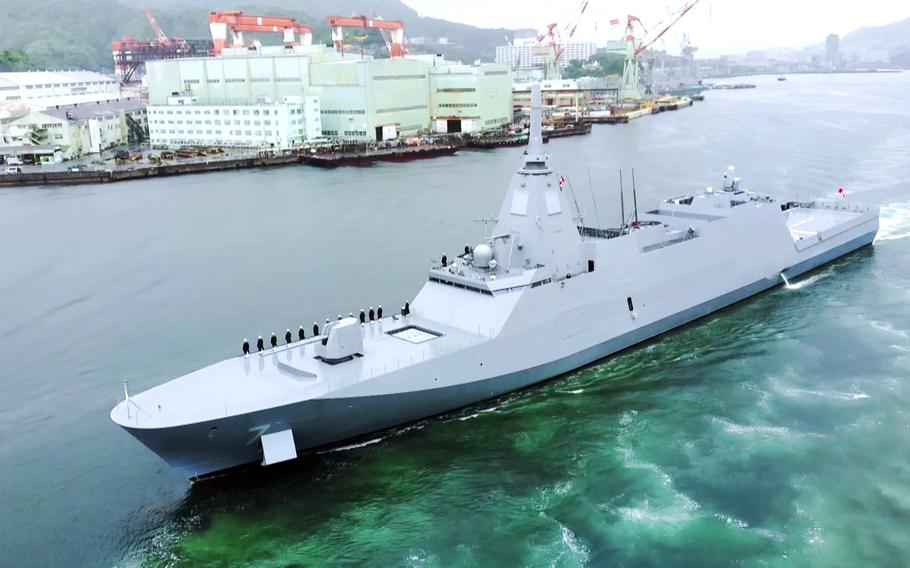
The Australian government chose the upgraded Mogami-class frigate, manufactured by Mitsubishi Heavy Industries of Japan, for its navy's future fleet of general purpose frigates, according to officials with both countries on Aug. 5, 2025. (Australia Department of Defence)
Australia will purchase general-purpose navy frigates from Japan in a deal worth up to $6.5 billion, according to government authorities from both countries.
Japan and Australia will jointly develop and produce 11 Mogami-class frigates in a deal expected to be finalized early next year, Japanese Defense Minister Gen Nakatani said Tuesday at a press conference in Tokyo.
Australia’s Department of Defence announced plans last year to spend up to $6.5 billion for the frigates as part of a $35.5 billion plan to more than double the size of its navy’s surface combatant fleet.
A final purchase price is under negotiation, Nakatani said. The two countries also need to decide “how to maintain and repair the vessels after completion and how production will continue” in Australia, he added.
The frigate deal complements Australia’s bid to bolster its submarine fleet by way of the AUKUS pact with the United States and United Kingdom. The U.S. agreed in 2021 to build at least two Virginia-class attack submarines as part of the pact. Other jointly built submarines would follow.
A U.S. defense official in June said the Pentagon is reviewing that agreement to ensure it aligns with President Donald Trump’s agenda.
Japan’s deal to sell frigates to Australia benefits their mutual ally, the U.S., by enhancing joint operations and employing shared training and equipment, Nakatani said Tuesday.
Japan’s Mitsubishi Heavy Industries will build the first three frigates and deliver them to Australia starting in 2029, according to a Tuesday news release from Australia’s Defence Department. The first frigate is expected to be operational by 2030.
Eight more frigates will be built in Western Australia, according to the release.
“The upgraded Mogami-class frigate will help secure our maritime trade routes and our northern approaches as part of a larger and more lethal naval surface combatant fleet,” Deputy Prime Minister Richard Marles, also the defense minister, said in the release.
The frigate sale would mark Japan’s second equipment transfer since reviewing its guidelines on defense transfers in 2014. It delivered an air surveillance radar system to the Philippine air force in December 2023, according to a news release from the Embassy of Japan in the Philippines.
The frigates would replace Australia’s fleet of Anzac-class frigates, according to the Australia Defence Department release. The Mogami-class is a stealth frigate with a range of 10,000 miles, able to fire ship-to-ship missiles and designed for a crew of 90, according to Japan’s Ministry of Defense.
“It will take our general purpose frigates from being able to fire 32 air defence missiles to 128 missiles, giving our sailors the cutting‑edge weapons and combat systems they need to prevail in an increasingly complex environment,” Pat Conroy, minister for Australia’s defense industry, said in the release.
In July, Japan agreed to an outright transfer of second-hand warships to the Philippines, possibly six Abukuma-class destroyer escorts, according to a July 7 report by The Japan Times, which cited unnamed government sources.
The escorts required a crew of about 120 and are equipped with anti-submarine and anti-ship missiles, according to the newspaper’s report.
The agreement would strengthen the two countries’ mutual interest in matching Beijing’s growing military power.
China’s coast guard has challenged Philippine vessels within the Philippines’ exclusive economic zone in the South China Sea. It has also come within the territorial limit claimed by Japan around the Senkaku Islands, a group of islets and rocks in the East China Sea.